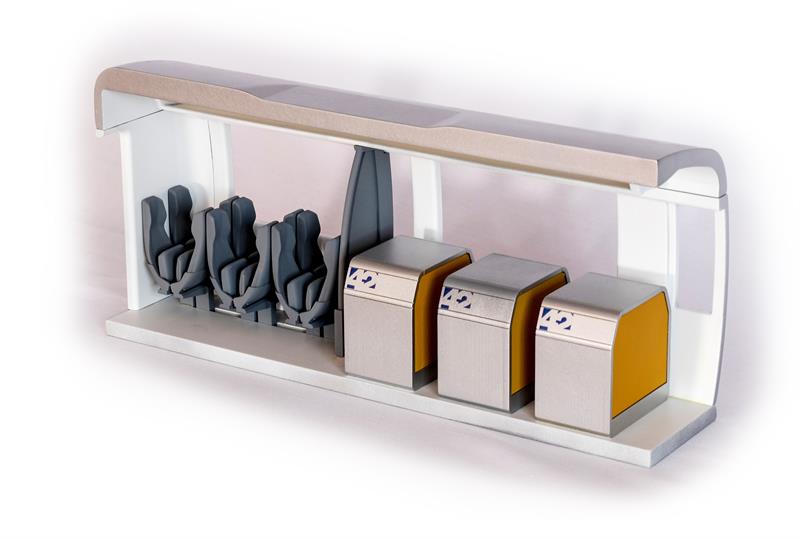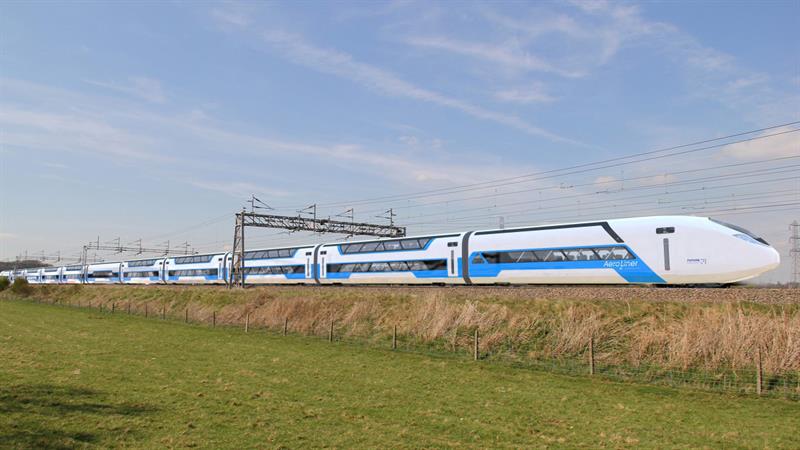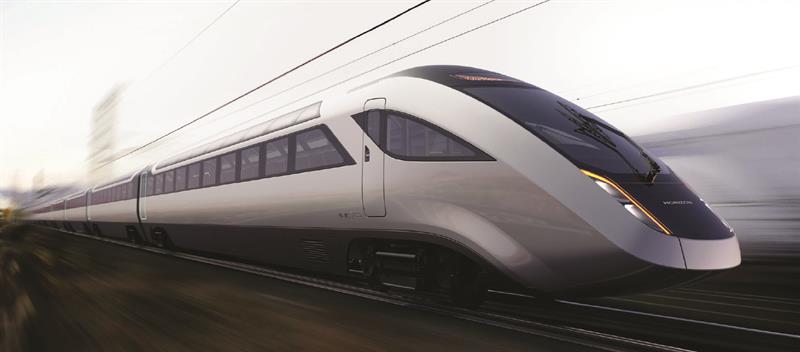The rail industry does not move at great pace. Part of this is down to a fear that change might jeopardise safety, and safety is of paramount importance in rail transport. And it is also in part down to the fragmented nature of the rail industry. It is effectively a series of monopolies running in parallel with each other – only one train, run by one operator, can run on the only available track, at any one time, operating under a single raft of regulations.
“There’s this very wide stakeholder panel,” said Dr Jon Spratley, Director of 42 Technology, and it’s actually quite hard to drive innovation into a structure like that. It is a complex sell. You have got to show benefit to all of them and it only takes one of them to fail to see the benefit and effectively block it.”
There is consequently a huge amount of inertia in the rail sector and to try to overcome this and stimulate some innovation, the Future Railway programme was launched by Network Rail and RSSB (Rail Safety and Standards Board). One competition run by Future Railway was to look new ways of thinking about the rolling stock, and that competition has yielded some thought-provoking designs.
One of the three finalists was 42 Technology, whose Adaptable Carriage requires a fundamental change of thinking about the railway’s business model as well as some neat engineering.
Spratley summed up the lack of change in the rail industry and why Future Railway is important: “If you start with a very rigid set of boundaries, you're going to get what the boundaries define, and that's going to be what you have today, because that's what the boundaries have been put there to enforce.” The argument continues that the rail industry knows it lacks innovation, recognises it needs it and so, through initiatives such as Future Railway, is inviting people from the outside who are inherently innovative and are not restrained by the established culture.
One advantage of the Tomorrow's Train Design Today competition is that not only has it provided the impetus for coming up with a new design, it has also provided a way of judging acceptance by all of the aforementioned stakeholders.Spratley observed: “Initially a lot of it was really about the vision, but we're a team of engineers and it's very difficult to keep engineers out of the detail.So we went in knowing that the sort of technologies that would be required were very feasible.What we didn't have at that point was the proof that the industry was interested – and the feedback that we've got from it is overwhelmingly positive.”

The company’s Adaptable Carriage idea, which is now being developed towards a demonstrator level, opens up a business model for the industry that doesn't currently exist.The premise is to be able to quickly convert a passenger carriage into one that can take high-value goods. Trains travelling into a city can be packed during the morning rush hour, but are effectively shipping fresh air on the return journey. “Our idea is that you reconfigure the trains so that you make use of that space and you can then move goods out of the city in the morning and into the city in the evening,” explained Spratley. “It's on an infrastructure that's already paying for itself, which means any margin to be gained from the movements of those goods essentially goes onto the bottom line. It's a business model that's been proved in the aircraft industry for a number of years.”
When initially working through the idea, it was proposed that an option may be to stretch out seating when it was quiet, or add in a coffee bar, or when busy introduce ‘perch’ seats to allow more people to have some level of seating. However, it emerged that the only two viable options were to have the carriage as all seating or all cargo. “It just was the simplest solution that made sense,” said Spratley.
That simple solution is to concertina up the seats so that it leaves space for standardised pallets to be loaded. For the scheme to be commercially viable the reconfiguring of the carriage, including checking that there is no one sleeping under the seats, reconfiguring the carriage and loading the cargo (or vice versa), must be under five minutes, the typical turnaround time of a rush hour commuter train. Most importantly, the seats have to be able to lock securely into position so that passengers have complete confidence in safety.
Until the project is finished and suitable IP has been put in place, 42 Technology were unable to give too many details, but the emphasis in terms of how the seat movement and carriage reconfiguration process would take place is, again, to keep it as simple as possible. Tom Copeland, Senior Mechanical Engineer at 42 Technology commented: “We will have as few moving parts as possible. Everything wears out in time, especially when you are running cables and using motors – the more complex the system the less reliable it will be. The automation system is based in a single, highly reliable and secure place.”
One of the biggest challenges will be the seat mechanism and how it moves reliably and robustly. The main mechanical test for this is the crash test and 42 Technology’s design needs to cater for the industry standards in this respect. Copeland said: “[The safety] comes from the way the seats are anchored when they're in the passenger position, through the structure of the seat itself. The load is actually put on the top of the seats, and so that whole system needs to be strong enough. It’s a big challenge.”
Such challenges are typically where 42 Technology starts its design process. Spratley revealed: “We tackle the difficult bits first.So whatever the biggest risk is, let's solve that bit, let's create a prototype and a test piece of that bit, let's make sure it can work. If you've ticked off the difficult areas and you've packaged it up together, when you make your first prototype you've got fairly good confidence that it will work.”
It seems the big test will not be the engineering, but in the industry’s acceptance of this innovative solution. Is it on the right track or will it be left standing on the platform?
The Competition ‘Tomorrow's Train Design Today’ was an international challenge set out by Future Railway in association with the Department for Transportand the Royal Institute of British Architects. The challenge for architects, engineers and designers was to propose new design solutions to improve passenger rolling stock across the UK rail network. 48 entries were initially received and a shortlist of ten designs selected to further develop their schemes. The ten designs selected in August 2014 were given grants of £75,000 and had until January 2015 to develop their schemes. The three teams then identified as finalists were 42 Technology, Andreas Vogler with the German Aerospace Center DLR, and PriestmanGoode. £2.2 million has been made available to fund the next stage development.
The Andreas Vogler entry (above) is for a double-decker high speed train design. The AEROLINER3000, specifically for the UK rail network, completed an in-depth feasibility study for the double-decker along with German Aerospace Center Institute of Vehicle Concepts DLR in Stuttgart. PriestmanGoode (below) focussed on medium term designs for rolling stock interiors with a focus on flexibility and adaptability. Director Paul Priestman, commented: “Passengers are already facing cramped conditions. It’s imperative that we find a long term solution to tackle the big issue of rail overcrowding, to alleviate pressure on the system, improve passenger experience, quality of life and value for money.”
|
Could this work for HS2? “I think it would be absolutely ideal for them,” said Dr Jon Spratley, Director of 42 Technology. “But there are some different requirements with high-speed trains.It's all to do with the wind pressures on doors. You tend to find that high-speed trains have much smaller doors, which makes it harder to load cargo in and out.It's not insurmountable - if it was felt that the business case warranted it, I'm sure it's not beyond the wit of man to design a train that could both go faster and have wider doors.However, as things currently stand, it would be quite a limitation. You couldn't take a Eurostar type train with the two little doors at the end.It would take you half an hour to load a carriage full of cargo, one box at a time.It wouldn't be feasible.So it has different challenges.And whilst we are very open to considering that, that's not our primary focus, because I don't think HS2 is in a position to have that level of engagement yet. But I believe the trains are going to be something like 400 metres long for HS2, which in peak hours they're looking at running short lengths. This means either stowing a couple of hundred metres of carriages somewhere, or filling it with something else to generate revenue.” |







